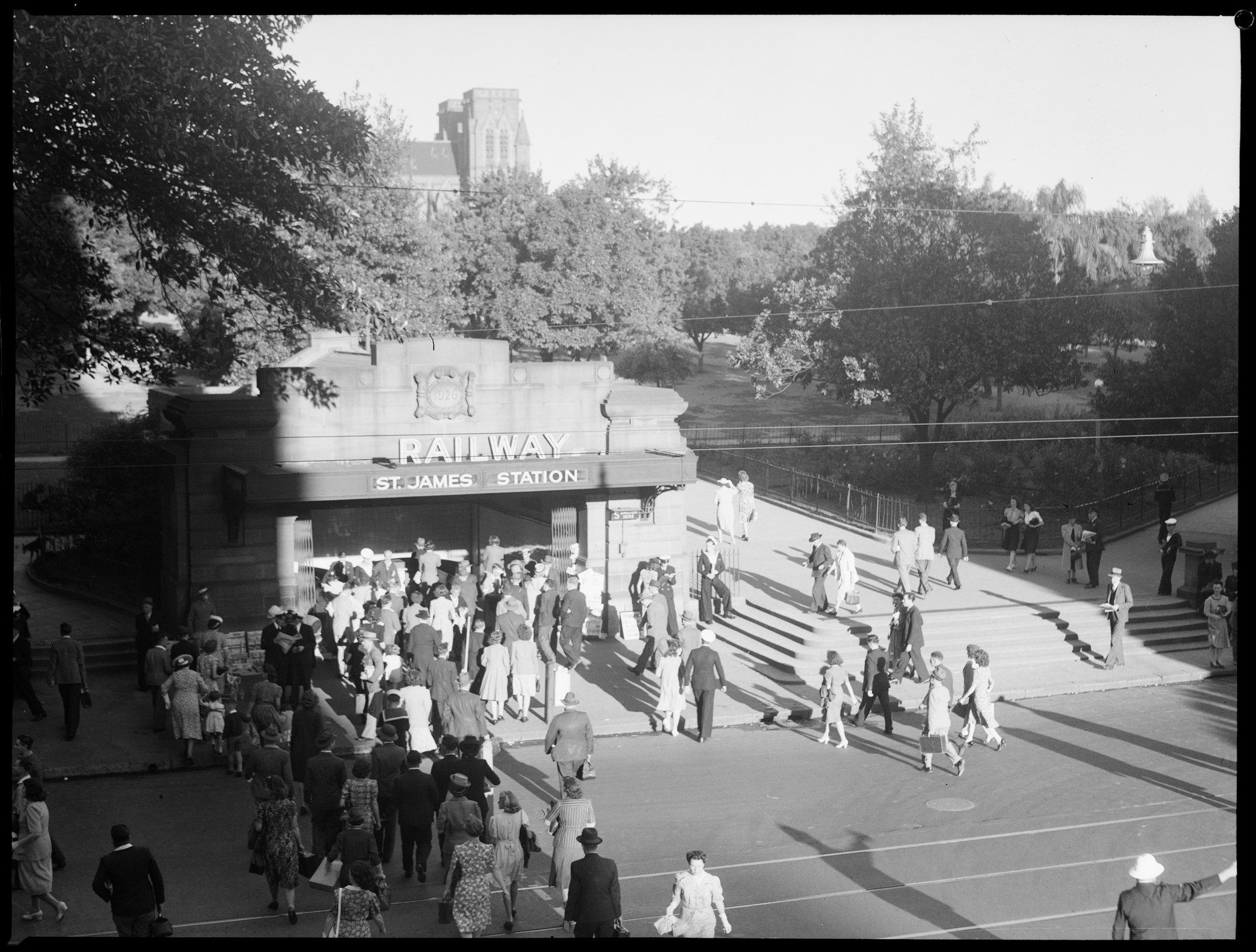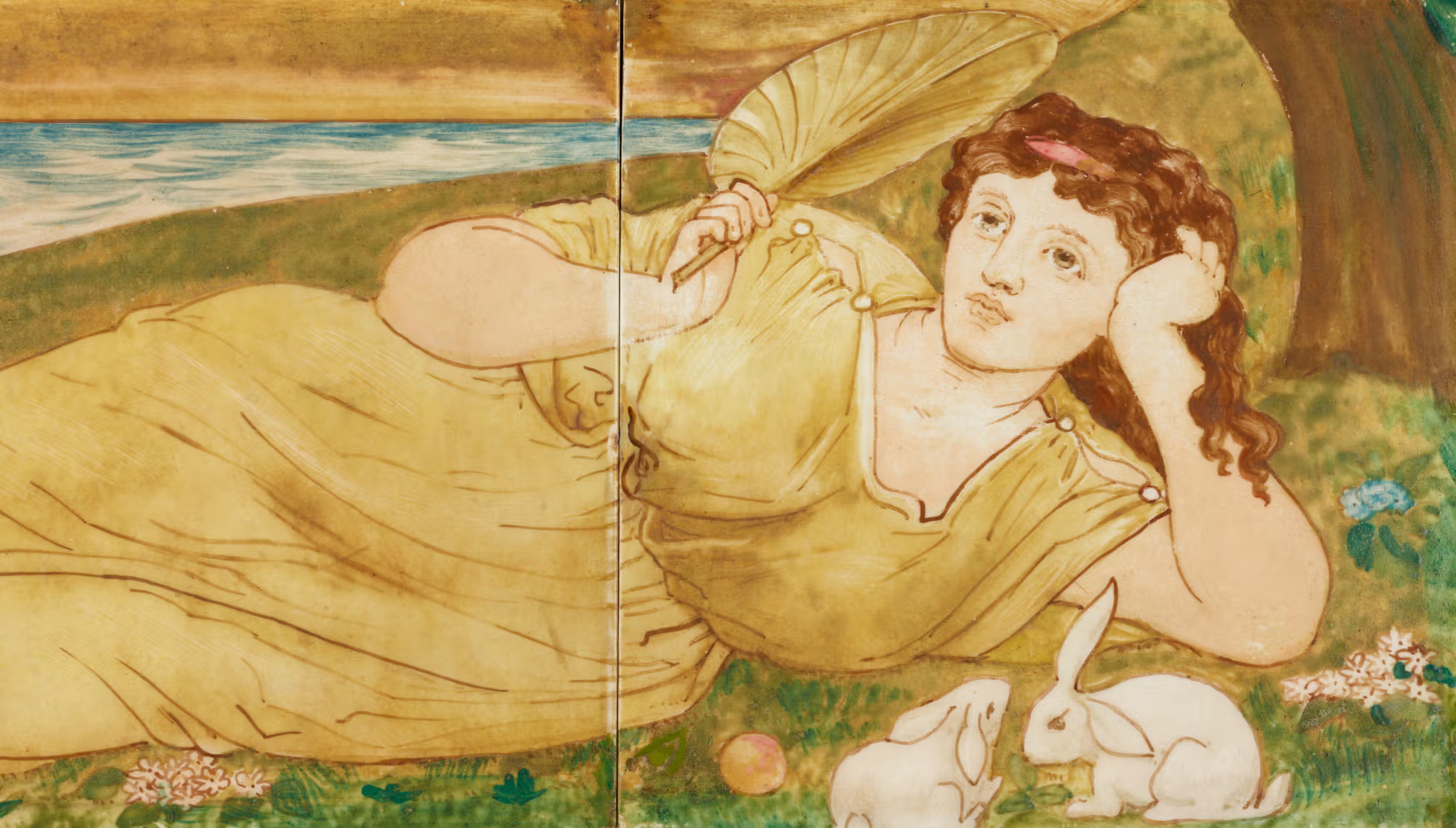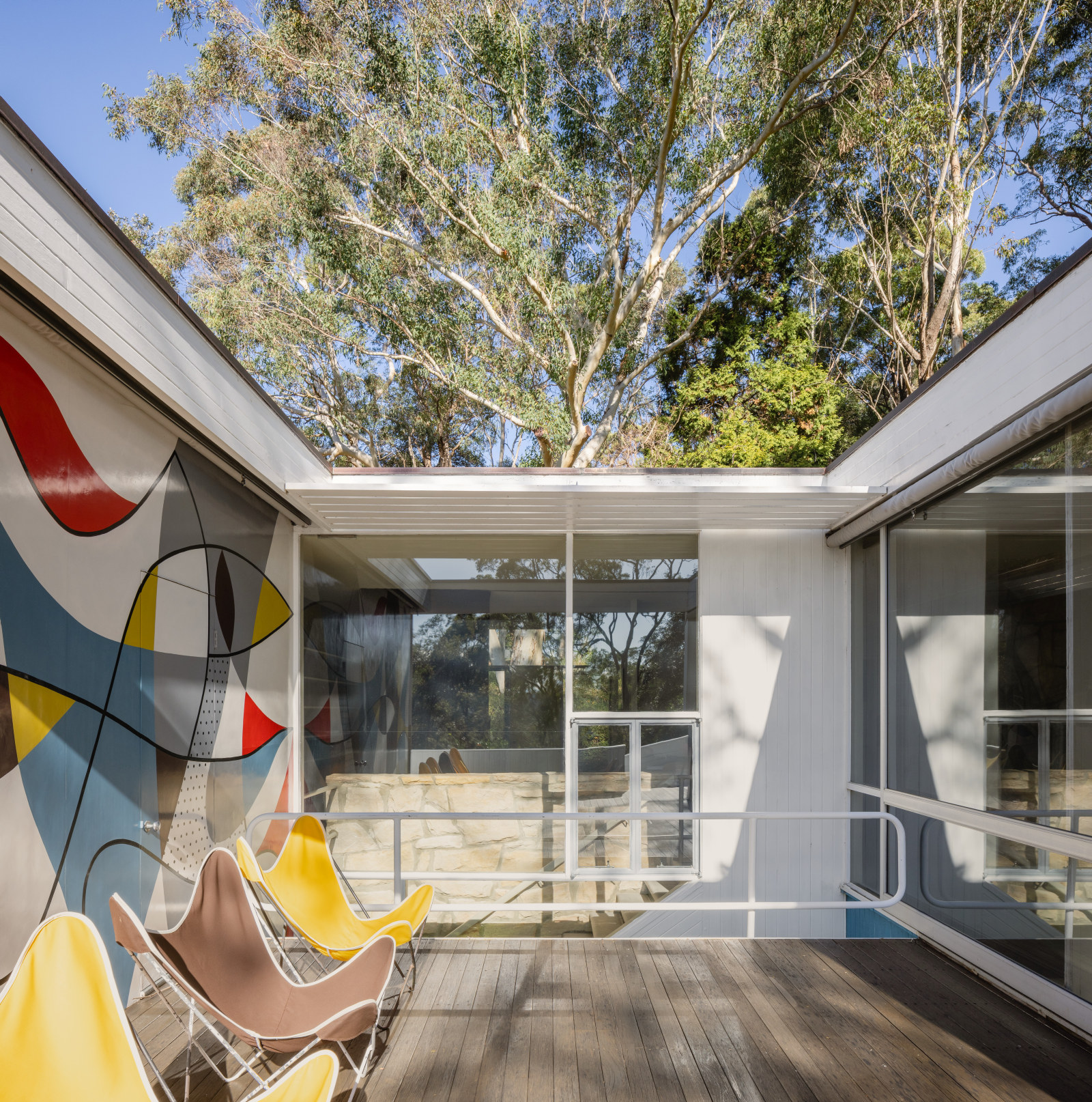A straight edge and a semicircle
Architect Harry Seidler and artist Frank Stella collaborated on just one project - Grosvenor Place. But the influence of Stella’s work is evident in the geometric plans of many towers and civic centres designed by Seidler.
Some of the most fascinating and visually stimulating connections between architecture and art are found in the collaborations between Sydney-based modernist architect Harry Seidler AC (1923–2006) and American artists such as Norman Carlberg, Charles O Perry, Alexander Calder, and painter and sculptor Frank Stella. Three of Stella’s paintings in relief from the Cones and pillars series dramatically fill the lobby of Grosvenor Place with their dynamic and colourful presence.
Many of Seidler’s projects demonstrate that he was consistently inspired by these American abstract expressionists and shared their infatuation with circular geometry. In his quest to enrich his work with fluid and plastic qualities, Seidler was particularly influenced by Stella’s Protractor series (1967–71). Comprising approximately 90 original paintings based on 27 diagrams, the series was inspired by and based on the shape of a protractor: a straight edge and a semicircle.
Stella produced three variations for each of his Protractor diagrams, which he described as ‘interlaces, rainbows, and fans’. The artworks are stunningly theatrical and beautiful paintings-as-objects, pulsating with the pull–push effect of overlapping and interlacing bands of bright colours. If you compare Stella’s diagrams to many of Seidler’s subsequent architectural plans, you can readily see similarities in their geometric structures.
I think these three works of Stella’s are utterly unfathomable. You don’t know where one element starts and the other goes. Stella is an amazing man because he is so completely of our time. He’s impatient, constantly changing, he moves from one thing to another, doing the utterly unpredictable. What fascinates me about his work is the implied visual impossibility of what he does.
Harry Seidler on the black and white maquettes for still-to-be-made Frank Stella artworks in the lobby at Grosvenor Place, Sydney; In "An Interview with Harry Seidler" Studio Collections Magazine, (Double Bay NSW, Sydney) Sept-Nov (1984) (2) pages 26-29 at page 28
Twenty-seven diagrams from Frank Stella’s Protractor series. Based on drawings published in William S Rubin, Frank Stella, Museum of Modern Art, New York, 1970. Redrawn by Matteo Marzi, 2013. Courtesy Intercontinental Curatorial Project, Original Drawings © MOMA
Twenty-one diagrams showing the geometric basis of Seidler’s tower plans. Harry Seidler & Associates, redrawn by Matteo Marzi, 2012. Courtesy Intercontinental Curatorial Project © Harry Seidler & Associates.
The design of Stella’s Khurasan Gate is reflected in the plan of Seidler’s Australian Embassy, Abra is referenced in the main facade of the Monash City Council building (formerly Waverley Civic Centre), and Khurasan Gate (variation) can be identified in the plan of the unrealised Conzinc Riotinto development in Melbourne. Another painting, Flin flon III, based on one of the variations of Abra, contains patterns similar to those found in Seidler’s plans for Sydney’s Grosvenor Place and the unrealised Chevron Hotel and Offices in Melbourne.
What is particularly intriguing about the geometric artworks in Stella’s Protractor series is that no matter how complex or flamboyant they might appear they rely on just one unit – the protractor, or semicircle. In the case of the Kufa Gate variations, the unit is reduced to a quadrant. Seidler adopted this geometry for his architectural plans, as it was inherently suitable for mass production: a circle is based on repetitive conditions as opposed to a rectangle or a square, which have special corner conditions. This was one of the ways the architect consistently pursued his mission – to achieve maximum effect with minimum effort.
No matter how exuberant they appear, Seidler’s later towers – such as the QV1 Office Tower in Perth, and the Riverside Centre and the Riparian Plaza in Brisbane – are consistently and typically based on a repetition of one basic unit, the quadrant in concert with other curves and rectilinear geometry.
Just as in Stella’s paintings, Seidler’s compositions are almost always resolved in plans that are then extruded vertically without further complications. It is the juxtaposition of curves in various horizontal planes that produces the spatial complexity required when these buildings are experienced in real life.
This article was written by Vladimir Belogolovsky, who is the founder of the New York based Intercontinental Curatorial Project. He is the author of Harry Seidler: lifework (Rizzoli, 2014) and co-curator of the exhibition Harry Seidler: Painting Toward Architecture.
Published on
Architecture & design

On This Day
20 Dec 1926 - Sydney underground railway opened
On 20 December 1926 the first section of underground railway in Sydney began operating

On This Day
27 Nov 1889 - Sydney Town Hall opened
On 27 November 1889 the Sydney Town Hall was officially opened. The Town Hall was built on Gadigal land, throughout the 1880s, on the site of an old cemetery using local Sydney sandstone

A global design story
Their original owner and use remain a mystery, but these striking tiles hold an intriguing connection to a significant international design story

A new way of living
Once word spread about the newly built Rose Seidler House in 1950, it was the ‘most talked about house in Sydney’. Seventy years on, it's impossible to deny the strength and daring of Seidler's vision